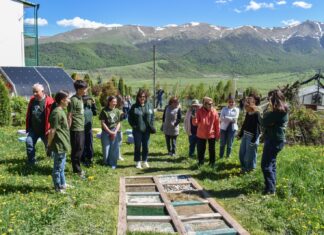CAMBRIDGE, Mass. – Vartan Oskanian, foreign minister of Armenia from 1998 to 2008, delivered a speech on April 12 at Harvard Law School entitled “Self-Determination Under International Law: The Cases of Kosovo and Nagorno-Karabakh.” Oskanian drew on his ten years of experience as foreign minister and chief negotiator of Armenia on the Nagorno-Karabakh or Artsakh issue. The talk was organized by the joint efforts of the Harvard International Law Journal, Harvard West Coast Law Students Association, Harvard European Law Association and the Harvard Middle Eastern Law Students Association and sponsored by the National Association for Armenian Studies and Research. It was moderated by Anna Crowe, Lecturer on Law and Clinical Instructor at the Human Rights Program of Harvard Law School.
After Crowe’s brief introduction, Oskanian pointed out that there are two questions pertaining to self-determination the answers to which remain disputed: is there an enforceable and coherent body of international law, and if so, is there a law on self-determination and secession that could be used to support the claims of minority groups? “The answer to these questions,” he dryly said, “depends on whom you ask, what the circumstances are, and the geopolitical interests of the rich and powerful.”
Diplomatic and political circles, he said, commonly believe in two realms of international legal order—functional international law in areas such as trade, international telecommunications and civil aviation, and political international law, which appears indeterminate and aspirational. The right to self-determination falls in the second realm.
Answering the second question, or the search for laws on the right to self-determination, is difficult because this right is not found in treaties, but, Oskanian said, “in the customs, general principles of law and the subsidiary means, such as UN General Assembly declarations and resolutions, judicial decisions and the writings of qualified publicists.” It developed as a political idea and principle in the 19th century, and only after the founding of the United Nations in 1945 gradually shifted to a more enforceable right to freedom from colonial rule.
Oskanian cited two international human rights covenants as broadening the understanding of the right to self-determination beyond a territorial basis to granting “all peoples” the right to self-determination, while noting that the protection of territorial integrity could only apply to states the governments of which represent the whole people belonging to the territory “without distinction as to race, creed or color.” Oskanian argued that the latter qualification, made in 1970, provided grounds for the right to “remedial secession.”
Oskanian then cited three cases of international practice supporting the idea of secession as a remedial right. First, he noted that in the case of the Aalander Islands, ruled by Finland but with a Swedish population, the League of Nations in the 1920s determined that self-determination and secession from Finland would be unwarranted except in the case of extreme oppression.









